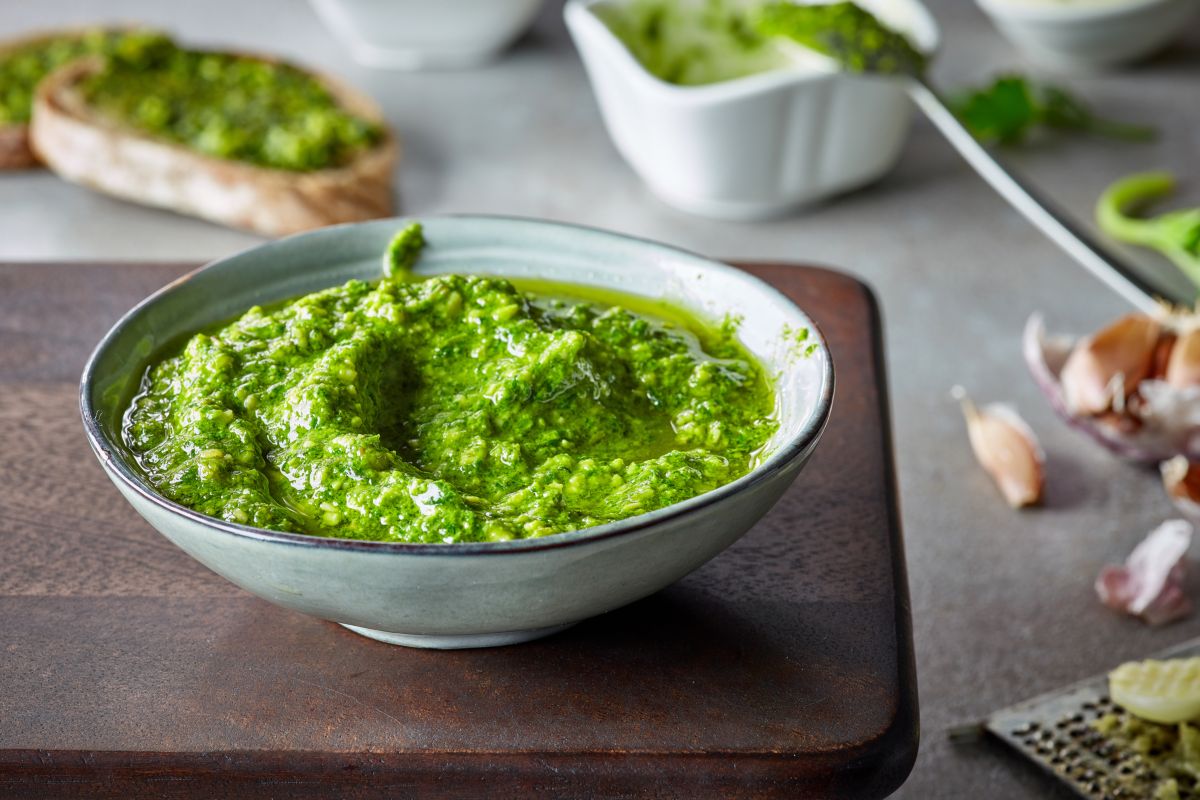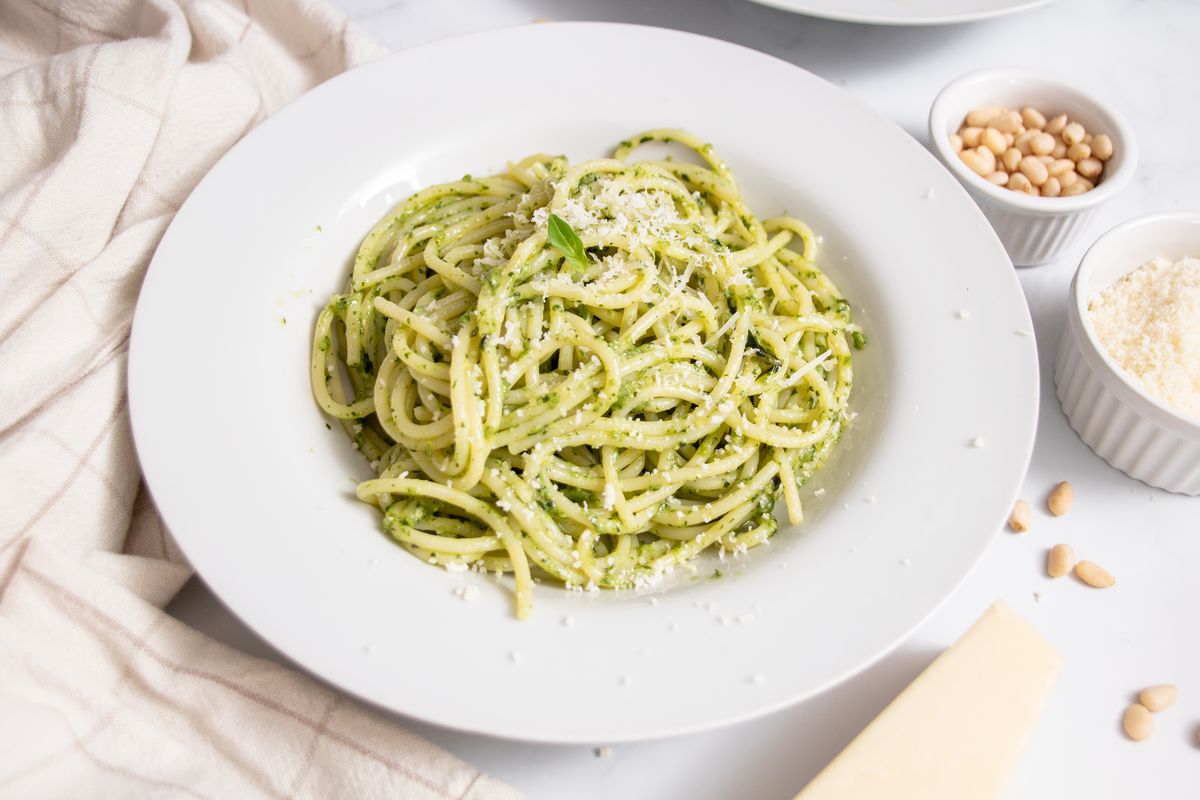Recipes
How to make basil pesto: the recipe and mistakes not to make


Did your basil plant grow lush during the summer? Here's how to make basil pesto and the mistakes to avoid to prepare it in the best possible way!
Basil pesto, a typical sauce of traditional Ligurian cuisine, can be prepared by anyone during the summer season in order to preserve the basil; During the winter you can use the sauce for many tasty recipes. In fact, pesto can be used not only to season pasta, but also to flavor savory pies, couscous and vegetables.
In addition to the traditional recipe with pine nuts, there are also numerous variations such as basil and almond pesto or walnut and basil pesto. Let's now see what the secrets are to avoid making mistakes and the classic recipe for Genoese pesto.

Preparation of basil pesto
Before starting, remember to choose only healthy and fresh leaves . Now let's see the recipe for basil pesto!
- Start by cleaning the basil leaves with a damp kitchen cloth, or washing them quickly and then drying them well.
- Place all the ingredients and a part of the oil in the mixer.
- Switch on and add the rest of the oil little by little.
- Blend intermittently to obtain a creamy mixture and transfer to plastic or glass jars.
If you want your basil to be good, healthy and lush, take care of it yourself: here are all our tips for growing basil on the balcony !
Genoese pesto with mortar: original recipe
Originally basil pesto was prepared with a mortar, a kitchen utensil that all Ligurian grandmothers continue to have at home and which is used to crush the ingredients of the recipe well, eventually reaching the green gold: the smooth sauce symbolizing the cuisine from Liguria (along with focaccia). But let's see how to do it:
- Place the salt and the cored garlic in the mortar and start crushing until you obtain a paste .
- Add the basil leaves together with the pine nuts (you can do this in stages until both ingredients are finished).
- When you have obtained a smooth paste, start adding the grated cheeses.
- Continue crushing and finish with a drizzle of oil until you obtain the classic consistency, without overworking the ingredients so that they do not oxidize and the pesto becomes dark.
And here is a video recipe if you want to prepare this sauce with the most classic and traditional procedure:
If you are in a hurry , here are all our quick first courses : try them!
storage
Store the pesto in the fridge for about a week and make sure the surface is well covered with oil to prevent mold from forming. Alternatively, freeze the jars for a few months.
Homemade basil pesto: mistakes not to make
- There are those who say that pesto without garlic is not a real pesto, but to avoid the flavor of the garlic ending up covering that of the other ingredients it is important to dose it well . If you use a quantity of basil leaves of around 70-80 g, one clove of garlic is sufficient. Then, to make it more digestible, there are those who scald it in boiling water or crush it with a garlic press.
- Be careful with cheeses! The true recipe for Genoese pesto is recognized by a specific specification that leaves no doubt about the cheeses to be used: Fiore Sardo (pecorino) with at least 10 months of maturation and Parmigiano Reggiano aged for at least 30 months .
- In the preparation of pesto, oil also has its importance: try to use a good quality, scented Ligurian oil. The oil , in fact, is used raw and its flavor will be felt immediately.
- If you don't have a mortar available, you can still prepare the pesto with the help of the blender, just being careful not to overheat the blades too much which would oxidize the basil.
History of Genoese pesto
An early example of Genoese basil pesto dates back to Roman times with moretum , described by Virgil.
The first documented recipe for Genoese pesto dates back to the nineteenth century: "La Vera Cuciniera Genovese" by Emanuele Rossi, and was clearly influenced by older pounded sauces such as agliata, a Ligurian variant of the classic agliata based on garlic and walnuts, widespread in Liguria during the Genoese maritime republic, and the French pistou.
How was it once prepared? Probably, in the ancient recipes of peasant homes, the use of Parmigiano Reggiano, a rare cheese on popular Ligurian tables, was not foreseen. Instead, only pecorino was used, not the Sardinian one, but the one handcrafted by the shepherds of the Genoese Apennines.
In most areas of Genoa and La Spezia , among the very first versions of pesto, especially among the less wealthy classes, leftover cheese rinds were used for economic reasons, and it was added to potatoes, which were less expensive than pasta.
Riproduzione riservata © - WT












